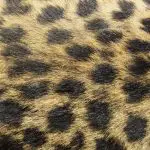If you've ever struggled to find Velcro that sticks to carpet, you understand the frustration of dealing with incompatible materials. This guide will equip you with the knowledge and expertise needed to identify the right Velcro for your carpeting needs.
By understanding Velcro's adhesive properties, identifying carpet-compatible materials, and testing adhesion on different carpet types, you'll master the art of securing items to carpeted surfaces.
Seeking recommendations from home improvement experts and exploring specialized Velcro options for carpets will further enhance your understanding.
Additionally, you'll learn how to maximize Velcro adhesion through proper application techniques. With this knowledge, you'll confidently select Velcro that effectively sticks to your carpet.
Key Takeaways
- The type of fibers in the carpet and its texture play a crucial role in determining the compatibility and adhesive strength of Velcro.
- Testing Velcro adhesion on different carpet types can help identify the best materials for a strong bond.
- Seeking recommendations from home improvement experts can provide personalized advice and prevent costly mistakes.
- Exploring specialized Velcro options such as carpet tape and gripper pads can offer carpet-friendly alternatives with strong adhesion properties.
Understanding Velcro Adhesive Properties
To understand Velcro adhesive properties, you need to consider the type of fibers in the carpet and the corresponding hook-and-loop design.
Velcro mechanics are based on the principle of hook-and-loop fasteners, where tiny hooks on one side of the material attach to loops on the opposing side.
When it comes to using Velcro on carpet, adhesive compatibility is crucial for a secure attachment. The type of fibers in the carpet determines the effectiveness of the Velcro adhesive.
For instance, low-pile carpets with tight loops provide a better surface for Velcro to adhere to compared to high-pile carpets with looser, more plush fibers.
Additionally, understanding the hook-and-loop design is imperative. The hooks on the Velcro material must be able to penetrate the carpet fibers and make contact with the backing material for a strong bond.
Compatibility between the adhesive on the Velcro and the carpet fibers is essential to ensure that the Velcro sticks securely to the carpet, providing the reliability and strength needed for various applications.
Identifying Carpet-Compatible Velcro Materials
When identifying carpet-compatible Velcro materials, consider the specific adhesive properties required for the type of carpet fibers. Carpet texture plays a crucial role in determining the compatibility of Velcro materials. Here are some essential factors to consider:
- Carpet Texture: Different carpet textures, such as low pile, high pile, or looped, can impact the effectiveness of Velcro adhesion. Understanding the specific texture of your carpet will help in selecting the most suitable Velcro material.
- Velcro Material Options: Various Velcro materials, including hook and loop, adhesive-backed, or industrial-strength Velcro, offer different levels of compatibility with carpet fibers. Assessing the options available and their respective properties is vital in identifying the most suitable material for your specific carpet type.
- Adhesive Strength: The adhesive strength of Velcro materials can vary, and selecting the appropriate strength is essential for ensuring a secure bond with the carpet fibers.
- Durability: Considering the durability of Velcro materials is crucial, as it directly impacts their ability to withstand the rigors of constant use on carpeted surfaces.
Understanding these key factors will aid in identifying Velcro materials that are compatible with your carpet, ensuring a secure and long-lasting bond.
Testing Velcro Adhesion on Different Carpet Types
To test the adhesion of Velcro on different carpet types, simply affix a small piece of Velcro to a discreet area of the carpet and press firmly for several seconds to ensure a secure bond. Carpet texture plays a significant role in Velcro adhesion testing.
When conducting these tests, it's crucial to consider the texture of the carpet. For instance, looped or low-pile carpets may provide a stronger grip for Velcro due to the increased surface area for the hooks to attach. On the other hand, high-pile or plush carpets might present challenges as the longer fibers can interfere with the Velcro backing, affecting its ability to adhere firmly.
It's essential to assess Velcro adhesion on various carpet textures to understand how different carpet types affect the bonding strength. By conducting adhesion testing across different carpet textures, one can gain valuable insights into Velcro's compatibility with various carpet types, enabling informed decisions for specific applications.
Understanding the interplay between Velcro backing and carpet compatibility through comprehensive adhesion testing is vital for achieving optimal performance and durability.
Seeking Recommendations From Home Improvement Experts
You should seek recommendations from home improvement experts before purchasing Velcro for carpet applications. Home improvement experts have hands-on experience with various Velcro alternatives and carpet adhesion techniques, making them valuable resources for your specific needs.
Here are some reasons why seeking recommendations from these professionals can help you make an informed decision:
- Expert Advice: Home improvement experts can provide personalized advice based on your specific carpet type and the intended use of the Velcro, ensuring that you choose the most suitable option for your needs.
- Product Knowledge: These professionals are well-versed in the different types of Velcro alternatives available in the market, enabling them to recommend the most effective ones for carpet applications.
- Installation Tips: They can offer valuable insights into carpet adhesion techniques, including tips for proper installation and maintenance to ensure long-lasting adhesion.
- Cost-Effective Solutions: By leveraging their expertise, you can avoid potential costly mistakes and select the most cost-effective Velcro solution for your carpet needs.
Relying on the knowledge and experience of home improvement experts can streamline your decision-making process and help you find the most effective Velcro solution for your carpet applications.
Exploring Specialized Velcro Options for Carpets
When exploring specialized Velcro options for carpets, it's important to consider carpet-friendly alternatives that won't damage the fibers.
Additionally, assessing the adhesive strength of the Velcro on different carpet textures is crucial for finding the most effective option.
Understanding these key points will help you make an informed decision when choosing Velcro for your carpet needs.
Carpet-Friendly Velcro Alternatives
When looking for Velcro alternatives that are carpet-friendly, consider specialized options designed specifically for use on carpets. These alternative fasteners are specifically engineered to provide secure adhesion to carpeted surfaces while also protecting the carpet fibers. Here are some carpet-friendly Velcro alternatives to explore:
- Carpet Tape: Double-sided adhesive tape specially designed for carpets, providing a strong bond without damaging the carpet fibers.
- Carpet Gripper Pads: These pads feature a non-slip surface that grips the carpet, providing an anchor for items without the need for traditional fasteners.
- Carpet Hook and Loop Strips: Similar to traditional Velcro, these strips are designed with a carpet-friendly adhesive backing that securely attaches to the carpet surface.
- Carpet-Friendly Adhesive Backing: Some specialized hook and loop fasteners come with an adhesive backing specifically formulated for use on carpets, ensuring a strong yet gentle grip.
These specialized alternatives provide effective solutions for securing items to carpets while minimizing damage and maintaining carpet protection.
Adhesive Strength on Carpets
To ensure optimal adhesion to carpets, consider specialized Velcro options designed with enhanced adhesive strength to securely attach items without causing damage to the carpet fibers.
When exploring Velcro for use on carpets, it's essential to prioritize adhesive durability. Look for Velcro products specifically engineered for carpets, offering superior adhesive strength to withstand regular foot traffic and potential carpet cleaning. These specialized options are designed to maintain a strong grip on the carpet fibers, ensuring that the Velcro remains securely in place over time.
Maximizing Velcro Adhesion With Proper Application Techniques
To ensure maximum adhesion between Velcro and carpet, it's essential to focus on surface preparation, Velcro type selection, and applying proper pressure.
Surface preparation tips can include cleaning the carpet and ensuring it's completely dry before applying the Velcro.
Additionally, selecting the appropriate type of Velcro for your specific carpet material is crucial for achieving optimal adhesion.
Surface Preparation Tips
For optimal adhesion of Velcro to carpet, begin by thoroughly cleaning the carpet with a vacuum cleaner. This ensures that the carpet is free from dust, debris, and any other particles that could hinder the Velcro adhesion.
Additionally, consider the adhesive compatibility with the specific type of carpet fibers to maximize the effectiveness of the Velcro.
Once the carpet is clean and dry, follow these surface preparation tips to enhance Velcro adhesion:
- Use a mild carpet cleaner to remove any stains or residues.
- Gently brush the carpet fibers in the intended Velcro application area to lift and align the fibers.
- Allow the carpet to completely dry before applying the Velcro.
- Press the Velcro firmly onto the carpet and hold it in place for a few seconds to ensure proper adhesion.
These surface preparation tips will help optimize the adhesion of Velcro to the carpet, providing a secure and long-lasting hold.
Velcro Type Selection
Consider the specific type of Velcro that's most compatible with your carpet fibers to ensure optimal adhesion and longevity.
When selecting Velcro for carpet applications, prioritize durability and carpet compatibility. Opt for heavy-duty Velcro designed for long-term use, as it offers superior durability and can withstand the rigors of constant use on carpeted surfaces.
Additionally, choose Velcro with adhesive backing specifically formulated for carpet adhesion. This type of Velcro is engineered to bond securely with carpet fibers, preventing detachment and ensuring a long-lasting hold.
By selecting Velcro that's both durable and compatible with carpet, you can maximize adhesion and extend the lifespan of your carpet-mounted items.
This strategic approach to Velcro selection will help you achieve reliable and lasting results on your carpeted surfaces.
Pressure and Adhesion
Maximize Velcro adhesion to carpet by applying even pressure with proper techniques for optimal durability and longevity. When applying Velcro to carpet, the way pressure is distributed plays a crucial role in its adhesion. To ensure maximum adhesion, consider the following factors:
- Even Pressure: Apply even pressure across the entire surface of the Velcro to ensure uniform adhesion.
- Surface Cleanliness: Clean the carpet thoroughly to remove any dirt or debris that may hinder adhesion.
- Proper Alignment: Align the Velcro strips accurately to optimize their adhesive contact with the carpet fibers.
- Firm Application: Use firm and consistent pressure during application to enhance the bond between the Velcro and the carpet.
Frequently Asked Questions
Can Velcro Damage My Carpet?
Velcro can damage your carpet if not used with caution. To protect your carpet, consider using adhesive-free alternatives or placing a protective layer between the Velcro and the carpet. Always test a small area first.
Is Velcro Safe to Use on High-Pile Carpets?
When securing items on high-pile carpets, consider alternatives to Velcro like rug grippers or double-sided carpet tape. To ensure a strong hold, clean the carpet surface thoroughly and apply the adhesive according to the manufacturer's instructions.
Can Velcro Be Used on Outdoor Carpets or Rugs?
Velcro on outdoor carpets provides durability, but weather resistance varies. When using Velcro on rugs, ensure it's weather-resistant for outdoor use. Test and monitor its performance to ensure it meets your needs.
How Long Does Velcro Adhesion Last on Carpet?
Velcro adhesion on carpet surfaces depends on durability and compatibility. It's essential to consider the carpet type and the weight or stress the Velcro will endure. Regularly inspect and replace worn Velcro for optimal adhesion.
Can Velcro Be Easily Removed From Carpet Without Leaving Residue?
Removing residue from carpet after Velcro adhesion is possible with gentle peeling and using a residue-free adhesive. Choose Velcro designed for outdoor application, as it's better equipped to adhere and be removed without leaving residue.
- Why Is Red Velvet Not Red? - April 25, 2024
- How Do You Describe Velvet Fabric? - April 25, 2024
- How Strong Is Velvet? - April 25, 2024








